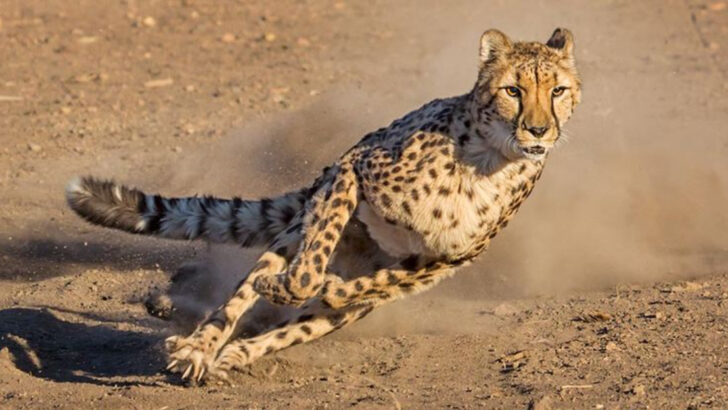Some animals move so fast, they make your head spin—and others are so slow, they might still be on their way. From sky-diving falcons to fish that zoom like torpedoes, speed in the animal kingdom isn’t just cool—it’s survival. But the real fun? Seeing who they can leave in the dust. Picture a cheetah smoking a racehorse. A dragonfly leaving a hummingbird behind. Or a snail getting lapped five times before lunch. Here are 23 animals that either blast past everything—or barely crawl their way through life. The fastest. The slowest. And the shocking matchups you never saw coming.
Peregrine Falcon
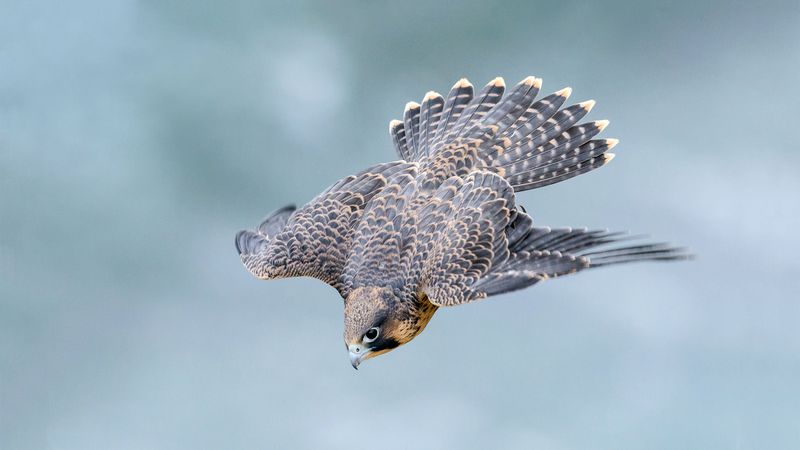
As the fastest bird—and by some measures, the fastest animal on Earth—the peregrine falcon is a marvel of nature. With speeds reaching over 240 miles per hour during its hunting stoop (high-speed dive), it easily outpaces even the swiftest of land mammals. These aerial predators are remarkable not only for their speed but also for their striking plumage and sharp vision, which allow them to spot prey from great distances. Often found in diverse habitats, they are equally at home in urban landscapes as they are in cliffside nests. Their adaptability and prowess in hunting make them true aerial masters.
Cheetah
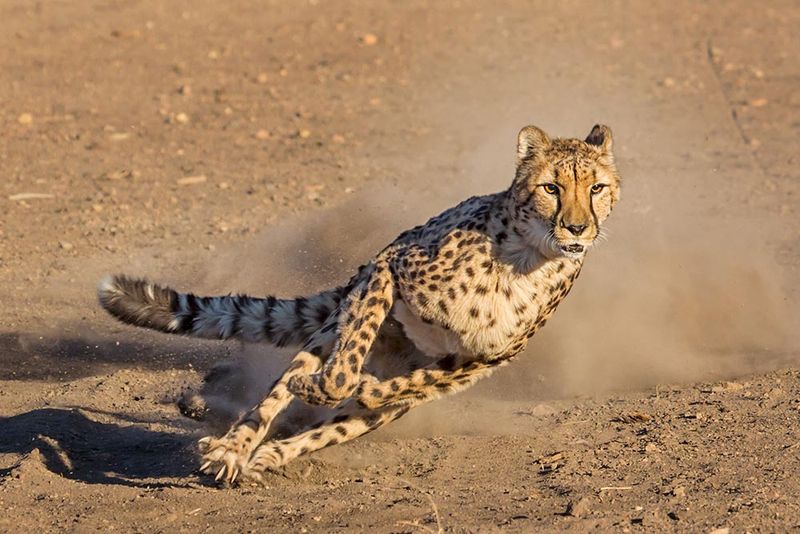
The cheetah, known for its unparalleled speed among land mammals, can accelerate from 0 to 60 miles per hour in just a few seconds. This incredible feline uses its lightweight frame and powerful legs to achieve these high speeds in short bursts, often during a chase. Unlike any other big cat, the cheetah’s non-retractable claws provide better grip during these sprints. Watching a cheetah hunt is akin to witnessing pure athleticism, as it gracefully maneuvers through the landscape. Despite their speed, cheetahs face numerous threats in the wild, including habitat loss and competition with other predators.
Sailfish
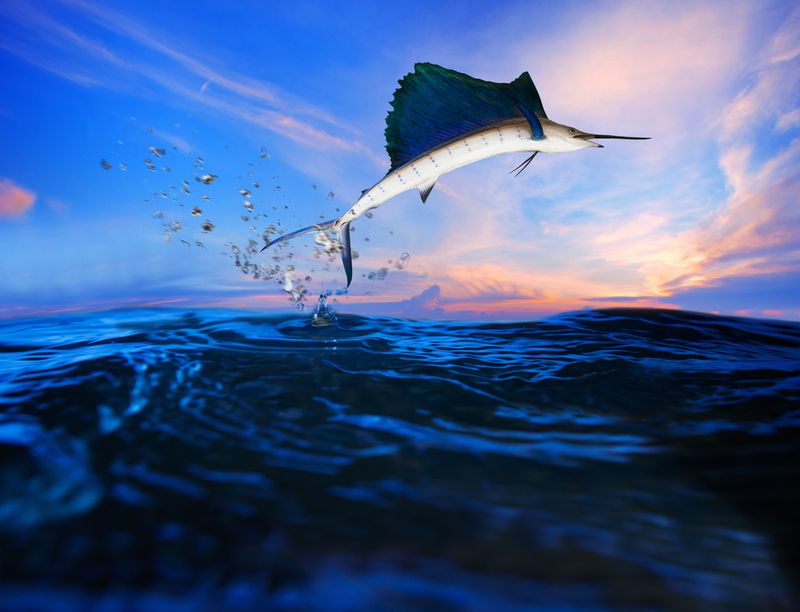
In the realm of fish, the sailfish reigns supreme for its speed and agility. Capable of swimming at speeds up to 68 miles per hour, this magnificent creature is easily recognized by its elongated body and large dorsal fin, or ‘sail’. This fin is often raised when the fish feels threatened or excited, creating an impressive display. Sailfish are found in warmer sections of the oceans, thriving in open waters. Their speed is not just for show—it is an essential adaptation for catching fast-moving prey, making them one of the ocean’s top predators.
Pronghorn Antelope
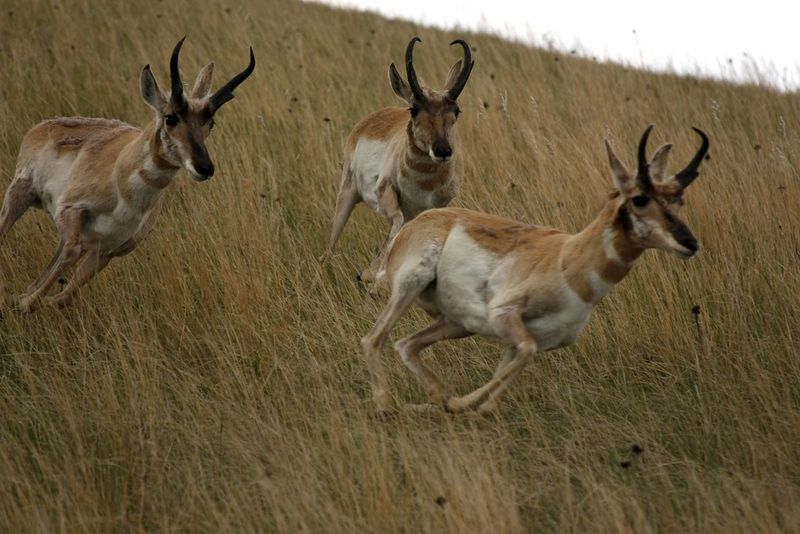
North America’s pronghorn antelope is second only to the cheetah in terms of land speed, capable of reaching 55 miles per hour. Unlike the cheetah, however, pronghorns can maintain high speeds for longer distances. Their high endurance is complemented by a unique respiratory system that supports their oxygen needs during fast runs. The pronghorn’s large eyes provide excellent vision, allowing it to spot predators from afar. Roaming the vast plains, pronghorns are a testament to evolution’s capacity to engineer speed and stamina together. Their resilience in the face of environmental challenges continues to intrigue scientists.
Mexican Free-tailed Bat
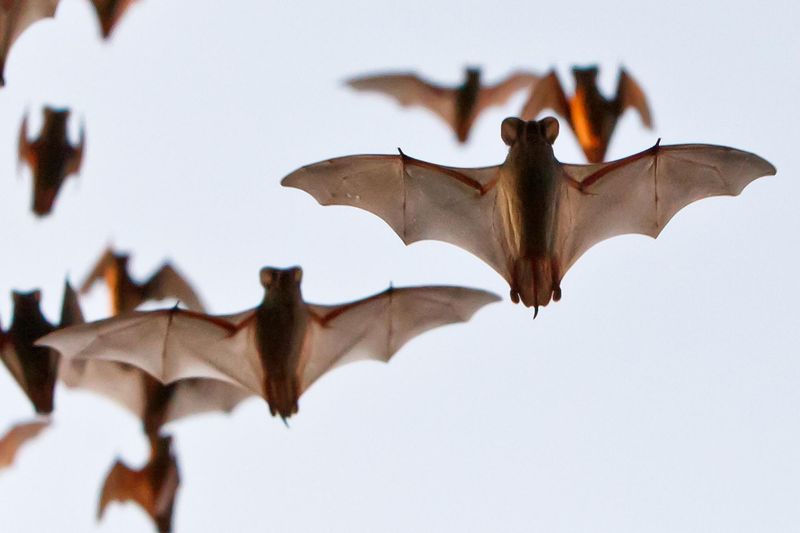
Often mistaken for birds due to their agile flying abilities, the Mexican free-tailed bat can reach speeds up to 99 miles per hour, making it one of the fastest mammals in the air. Found in large colonies throughout the Americas, these bats are essential for pest control, consuming vast amounts of insects nightly. Their streamlined bodies and long tails aid in swift, agile flight, enabling them to cover great distances in search of food. Despite their small size, these bats play an outsized role in their ecosystems, illustrating the power of speed in survival.
Black Marlin
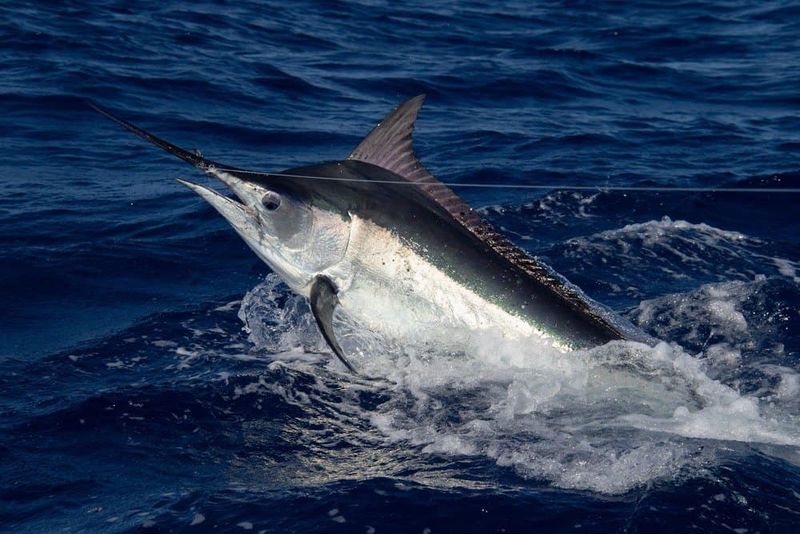
Among the swiftest of all fish, the black marlin can swim at speeds up to 82 miles per hour. With its powerful, torpedo-shaped body and long bill, this fish is perfectly adapted for speed. Black marlins are predominantly found in the tropical and subtropical regions of the Indian and Pacific Oceans, where they are prized both for their fighting ability and their speed by sport fishermen. Their striking appearance and sheer velocity make them a marvel of the marine world, effortlessly outpacing many other sea creatures in their pursuit of prey.
Grey-headed Albatross
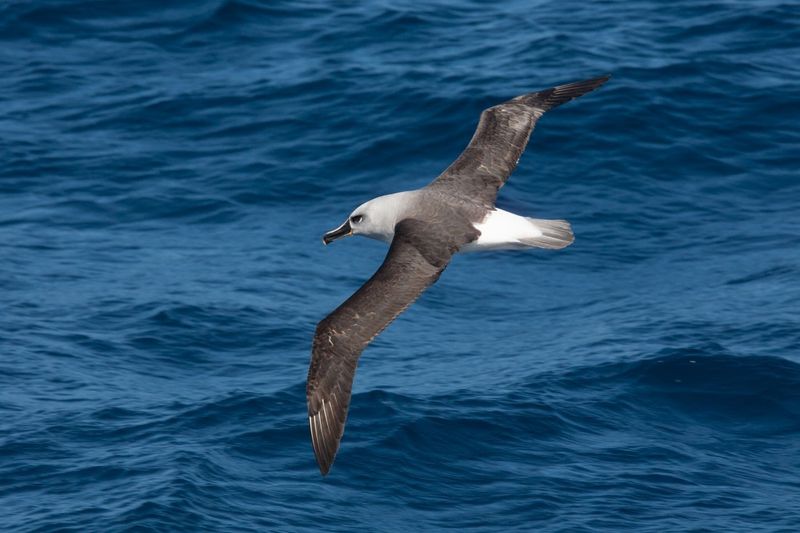
The grey-headed albatross is not only a symbol of endurance but also of speed. These seabirds can reach speeds up to 79 miles per hour, thanks to their long wings and ability to harness wind currents. Their life at sea is an odyssey of constant travel, as they cover thousands of miles across the Southern Ocean with ease. This majestic bird’s navigation skills are second to none, allowing it to find food over vast expanses of water. The albatross’s grace and speed make it an aerial phenomenon, celebrated in maritime lore and ornithology.
Brown Hare
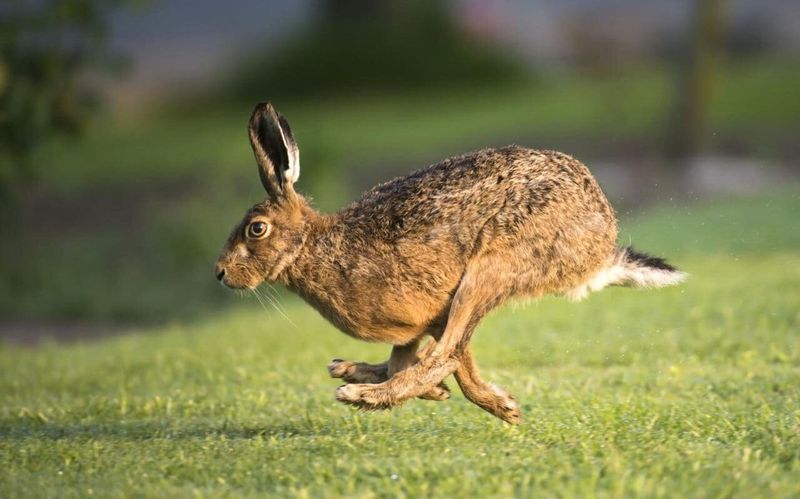
With speeds reaching 48 miles per hour, the brown hare exhibits remarkable speed and agility on land. Unlike rabbits, hares are adept at running and leaping, using their strong hind legs to escape predators. Found throughout Europe and parts of Asia, these creatures prefer open fields where they can run at full throttle. Their large eyes and ears provide acute senses, crucial for detecting danger. This speed, combined with their ability to change direction swiftly, makes the brown hare an elusive quarry for predators. Their ability to thrive in various habitats is a testament to their adaptability.
Common Ostrich
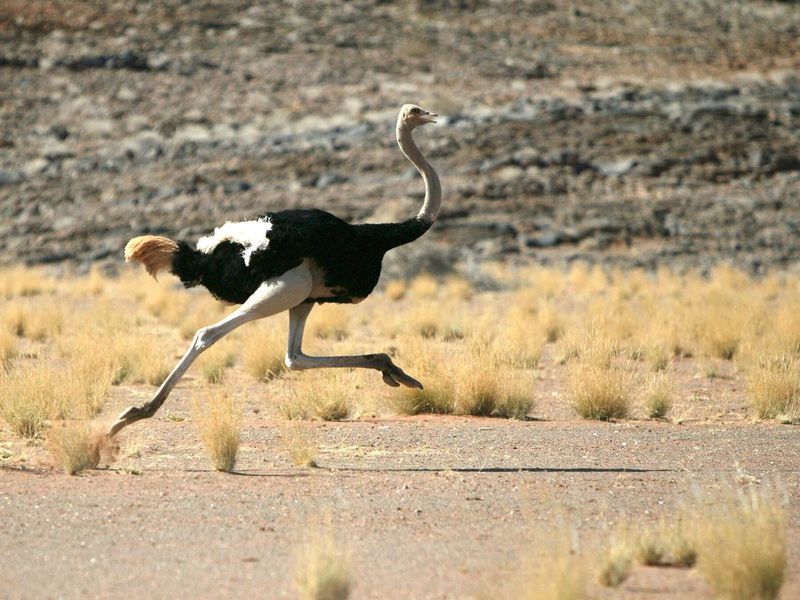
The common ostrich is a flightless bird that compensates with incredible terrestrial speed, capable of running at 45 miles per hour. These large birds use their long, powerful legs for both speed and defense, capable of covering great distances to escape threats. Native to the African savannas, they live in groups that provide mutual protection. Despite their size, ostriches are surprisingly agile, using their wings to balance while running. Their speed and strength make them formidable opponents for many predators. The ostrich’s unique adaptations have made it a subject of fascination and study.
Quarter Horse

Renowned for its speed over short distances, the American Quarter Horse is a staple of rodeos and racing. With the ability to reach 55 miles per hour, it excels in quarter-mile races, from which its name is derived. Bred for its powerful hindquarters and quick acceleration, the Quarter Horse is a versatile breed, used in various equestrian disciplines. Its speed and agility make it a favorite among ranchers and horse enthusiasts. The combination of strength, speed, and a gentle nature have ensured this breed’s popularity and success across the Americas.
Springbok
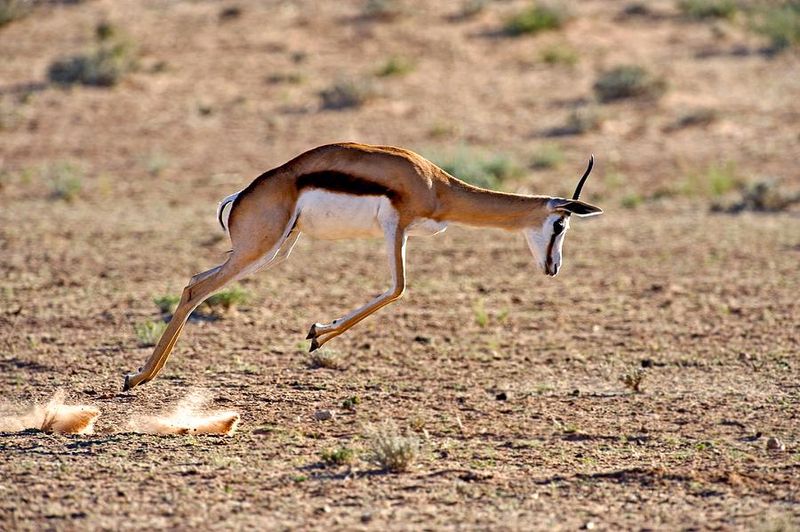
The springbok, a medium-sized antelope, is known for its speed and unique leaping behavior called pronking. Capable of reaching speeds of 60 miles per hour, it uses its agility to evade predators on the African savanna. Springboks are social animals, often seen in large herds, which provides safety in numbers. Their distinctive white and tan coloring, along with impressive speed, make them a striking sight. These attributes not only help in avoiding threats but also in attracting mates during the breeding season. The springbok is a symbol of vitality and grace in its natural habitat.
Blue Wildebeest
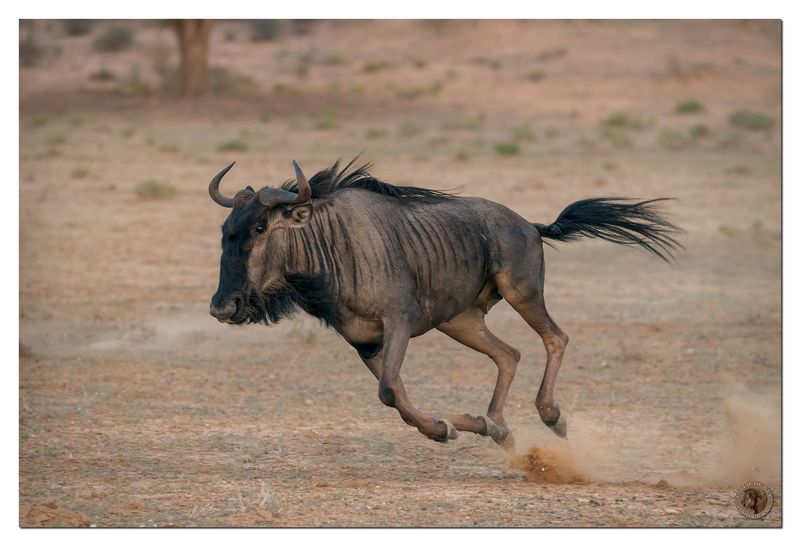
The blue wildebeest, synonymous with the Great Migration, can reach speeds of up to 50 miles per hour. Despite their bulky appearance, these animals are surprisingly agile and fast, a necessity for evading predators during their long treks across the Serengeti. Wildebeests travel in large herds, providing protection and the advantage of numbers in the face of danger. Their ability to travel long distances at speed reflects their adaptation to the challenging environment of the African plains. The wildebeest is a testament to nature’s ability to shape resilience and endurance.
Lion
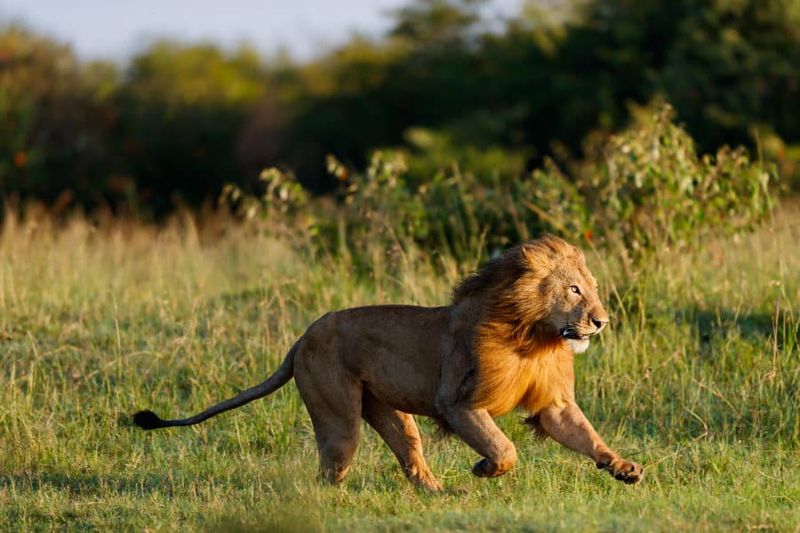
Often referred to as the king of the jungle, the lion is not just a symbol of strength but also of surprising speed. Capable of reaching speeds up to 50 miles per hour, lions utilize bursts of speed to catch prey. They hunt in prides, using coordinated strategies to encircle and ambush their targets. The lion’s muscular build and powerful legs contribute to its hunting prowess. These apex predators are vital to maintaining the ecological balance within their habitats. Their majestic presence and social dynamics continue to captivate wildlife enthusiasts and researchers alike.
Thomson’s Gazelle
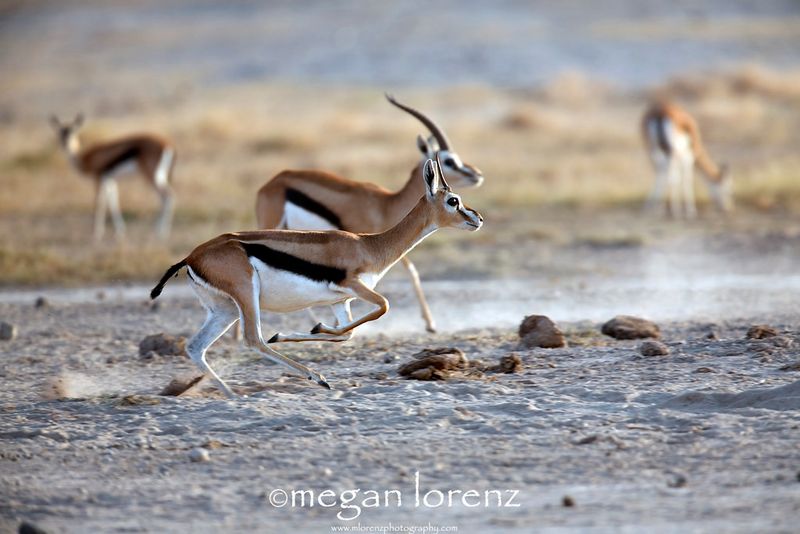
Thomson’s gazelles are small but incredibly swift, reaching speeds up to 50 miles per hour. These nimble creatures, found in East Africa, are experts at evading predators through quick, zigzagging sprints. Their remarkable speed is a crucial survival trait on the predator-rich savannas. Despite their size, they exhibit a remarkable endurance for long-distance running, often outlasting their pursuers. The gazelle’s elegant movements and speed make it a favorite subject for wildlife photographers. Their ability to thrive in harsh environments speaks to their incredible adaptability and resilience as a species.
Anna’s Hummingbird
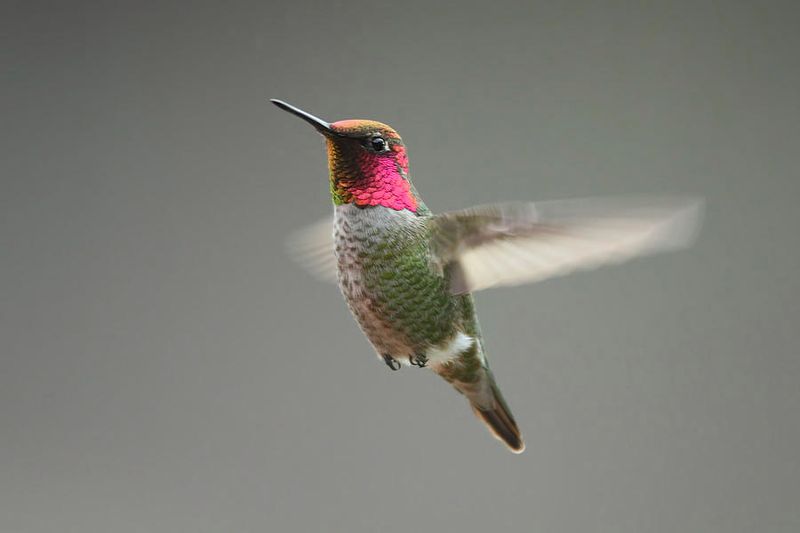
Anna’s hummingbird, though small, is a speed marvel. Its rapid wing beats allow it to reach speeds of up to 61 miles per hour during courtship dives. This tiny bird is known for its iridescent feathers, which glimmer in the sunlight, making it a jewel of the bird world. Found along the western coast of North America, these hummingbirds are energetic and territorial. They are capable of hovering in place, thanks to their unique wing structure. Their speed and agility in the air are crucial for feeding on nectar and evading larger predators.
Greyhound

Renowned for its speed, the greyhound is the fastest dog breed, capable of reaching 45 miles per hour. Originally bred for hunting, their streamlined bodies and long legs make them ideal for racing. Greyhounds are gentle and friendly, often contrasting with their fierce speed on the track. These dogs are known for their minimalistic lifestyle, enjoying rest as much as they enjoy running. Their speed and gentle temperament make them popular pets and companions. Greyhounds are a perfect example of how selective breeding can enhance specific traits in domestic animals.
African Wild Dog
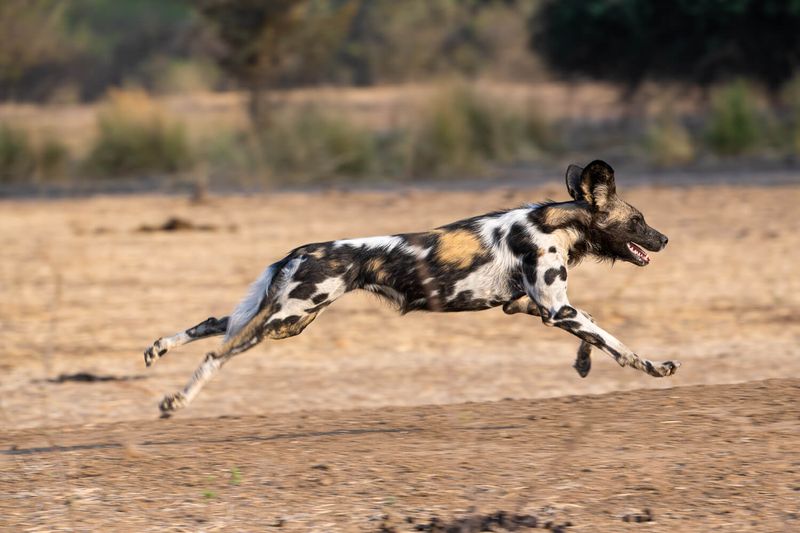
Known for their unique social structure, African wild dogs can reach speeds of up to 44 miles per hour during hunts. These highly social animals work together in packs, using coordinated strategies to chase down prey over long distances. Their ability to maintain speed is a key factor in their hunting success. African wild dogs are distinguished by their mottled coats, large rounded ears, and bushy tails. Their social dynamics and cooperative hunting techniques make them fascinating subjects for researchers and wildlife enthusiasts. These dogs are a testament to the power of teamwork in the animal kingdom.
Elk
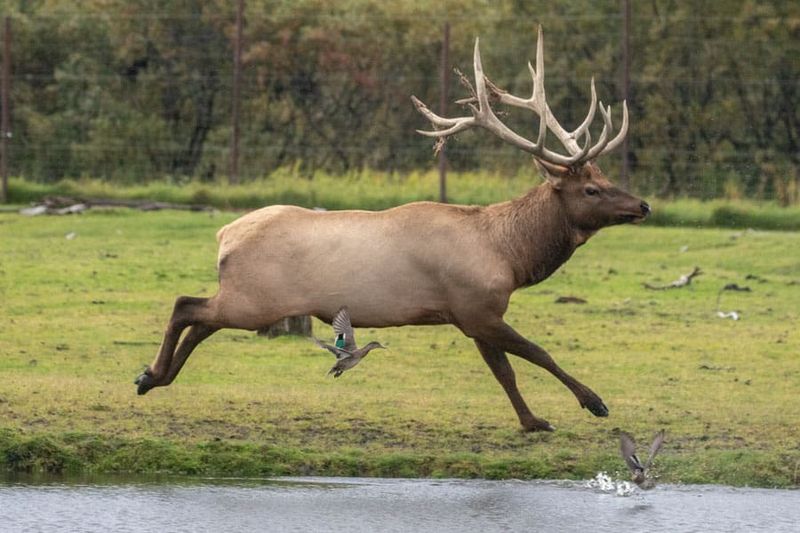
Elk are among the largest members of the deer family and can sprint at speeds of up to 45 miles per hour. These powerful animals are found in North America and parts of Asia, where they roam in herds across diverse habitats. Elk are known for their impressive antlers, which can grow up to four feet long. Their speed and strength are crucial for escaping predators and competing for mates. Despite their size, elks are graceful runners, able to navigate rugged terrain with ease. Their role in the ecosystem is significant, affecting vegetation patterns and supporting predator populations.
Red Kangaroo
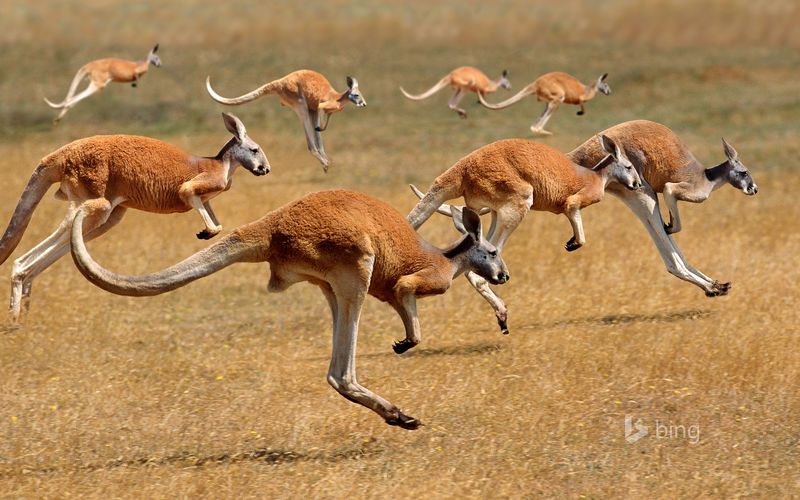
The red kangaroo is the largest marsupial and can reach speeds of up to 44 miles per hour. Using their strong hind legs, these iconic Australian animals can cover great distances in jumps, making them efficient travelers across the outback. Red kangaroos are adapted to the harsh environments of Australia, where they graze on grasses and shrubs. Their ability to move quickly and leap over obstacles is vital for their survival. Their size, strength, and unique method of locomotion make them a captivating symbol of Australia’s wildlife diversity and resilience.
Jackrabbit
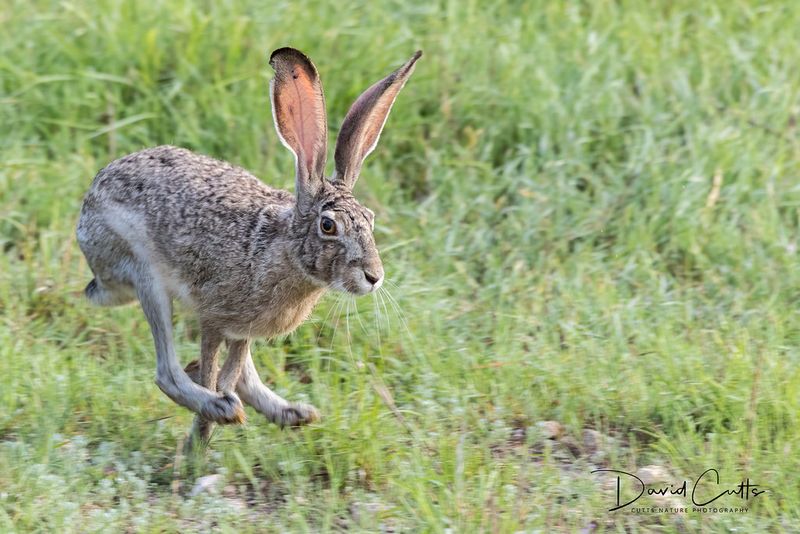
Jackrabbits, part of the hare family, are built for speed and agility, capable of reaching speeds up to 45 miles per hour. Found in the open plains and deserts of North America, they rely on their speed to evade predators. Jackrabbits have long ears for excellent hearing and powerful hind legs for rapid acceleration and long-distance running. These traits make them well-suited to their arid habitats. Their ability to quickly change direction while running makes them formidable escape artists. Jackrabbits are an integral part of their ecosystems, serving as prey for larger predators.
Caribou
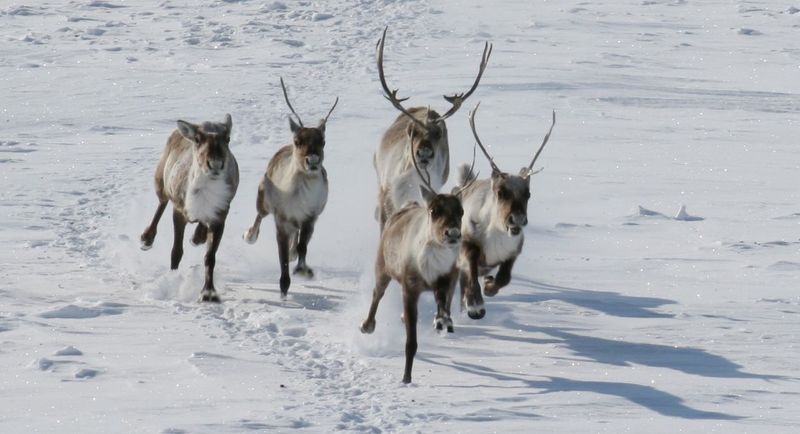
Caribou, known in North America as reindeer, are remarkable not just for their impressive migrations but also for their speed, reaching up to 50 miles per hour. These animals are well-adapted to cold environments, with thick fur and large, spreading hooves for walking on snow. Caribou undertake some of the longest migrations of any terrestrial mammal, covering thousands of miles each year. Their speed is crucial for escaping predators and navigating vast, open landscapes. The caribou’s endurance and adaptability have made them iconic symbols of the Arctic wilderness.
Harpy Eagle
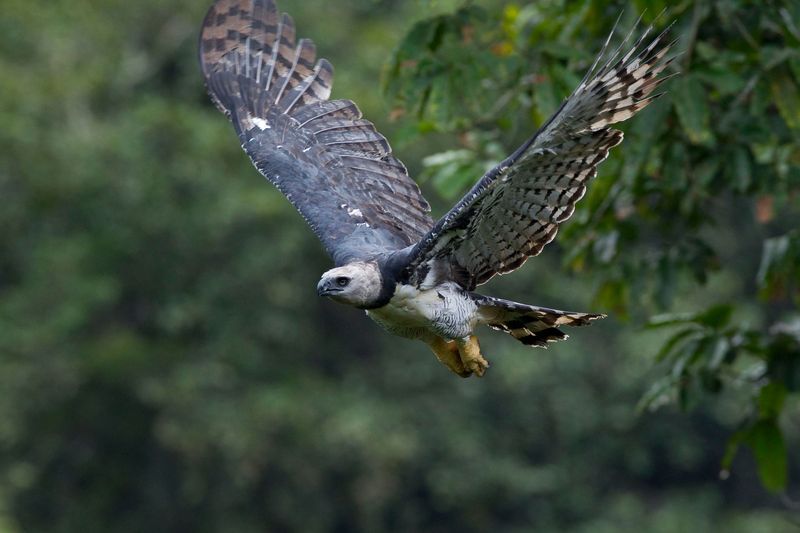
With a wingspan that can exceed 7 feet, the harpy eagle is one of the largest and most powerful birds of prey. It can reach speeds of up to 50 miles per hour during a dive. Native to the rainforests of Central and South America, harpy eagles are skilled hunters, preying on mammals like monkeys and sloths. Their keen eyesight and strong talons make them formidable predators. The harpy eagle’s striking appearance and hunting prowess have earned it a place in the myths and legends of many native cultures. Its role in maintaining ecological balance is vital.
Spur-Winged Goose
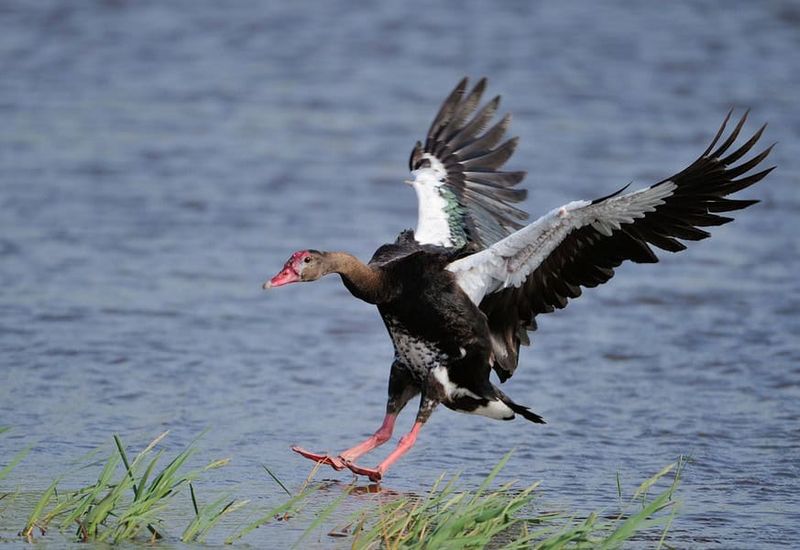
The spur-winged goose isn’t just a marvel in the air—it’s the world’s fastest flying goose. Reaching speeds up to 88 mph, this avian speedster utilizes its powerful wings to cover vast distances quickly. In flight, its imposing wingspan and distinct wing spurs make it a remarkable sight. Typically found in sub-Saharan Africa, these geese thrive in wetlands.
Their speed aids in effortless migration and escaping predators. Interestingly, the spur-winged goose can secrete a kind of poison from its skin, a rare trait in birds. Their swift flight and unique defense mechanism make them fascinating creatures.
Search Query: Spur-winged goose flying fast

